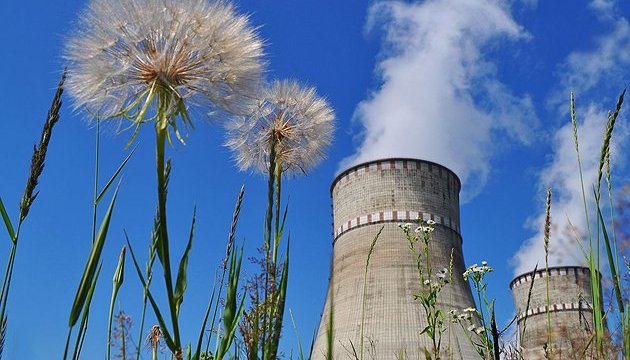УДК 551:242:553.495 • Issue 3 (31) / 2020 • 72-78 pages
Semenyuk N., Verkhovsev V., Vaylo A., Kulibaba V.
Semenyuk N., PhD (Geol-min.), leading researcher, State Institution «The Institute of Environmental Geochemistry of National Academy of Sciences of Ukraine», semenuk205@gmail.com
Verkhovsev V., D.Sc. (Geol.), Senior Research Fellow, Head of department, State Institution «The Institute of Environmental Geochemistry of National Academy of Sciences of Ukraine», Verkhovtsev@ukr.net, orcid.org/0000-0002-1015-6725
Vaylo A., PhD (Geol.), Senior Researcher, State Institution «The Institute of Environmental Geochemistry of National Academy of Sciences of Ukraine», alexv54@ukr.net, orcid.org/0000-0001-9540-2448
Ganevich A., Researcher, State Institution «Institute of Environmental Geochemistry of the NAS of Ukraine», 19ganevich@gmail.com,
orcid.org/0000-0001-8594-7532 State Institution «The Institute of Environmental Geochemistry of National Academy of Sciences of Ukraine»
Kulibaba V., Junior Research Fellow, State Institution «The Institute of Environmental Geochemistry of National Academy of Sciences of Ukraine», kulibaba3398@ukr.net
Abstract
The article discusses the results of comprehensive studies of the integral and differential geodynamics of the Early Proterozoic Novoukrainskyi granite gneiss dome, which does not have its own petrological, parametric and specialized analogue on the Ukrainian shield. A feature of this geostructure is a large-scale formation of rheomorphic (on ancient granitoids) coarse-porphyroblastic granites (Novoukrainskyi) within its limits, as well as granitization of the gneiss formation, represented here by the Checheliiv suite of the Ingul-Inguletsk series and the stone-Kostuvatska suite of the Buh series. The formation of a powerful gravitational minimum as a result of granitization processes led to an intense uplift of granitized rocks and the pulling into the uplift of adjacent non-granitized rock complexes. Based on a comparison of reference dates – the completion of the crystallization processes of Novoukrainskyi granites and the formation of uranium ore industrial concentrations, in the apogranite and apogneiss albitites, equal to the pre-ore and post-ore denudation sections of the Novoukrainskyi dome were determined. The migration of the apical part of the dome, associated with tectono-magmatic activation of the Hercynian era, was traced. The tectonic activation of the Novoukrainskyi granite-gneiss dome in the Cenozoic was investigated, the depths of the denudation section of its constituent structures were determined, and the safety of the deposits of the sodium-uranium formation from ore-denudation was estimated. The stages of dome geodynamics were established, which are coordinated with the processes of formation and evolution of the Ukrainian shield, connected with the split of the Sarmatian shield of the East European platform, the formation of adjacent geostructures and the transportation of low concentrations of uranium in sedimentary volcanic deposits of the pre-Baikal era, which formed the basement of the Scythian platform during the Baikal and Hercynian periods. The absence of industrial deposits (with over 200-meter wide uranium mineralization) in the southern part of the Novoukrainskyi granite-gneiss dome is the result of the differentiated geodynamics of this structure at the post-ore stage of its evolution.
Key words: granitoids, gneisses, dome, massif, pluton, geodynamics, uranium mineralization, process, stage, paleo-valley, ascending, movements, absolute age, sodium-uranium formation.
Article
Reference
- Kalyaev G.I. (1965), Precambrian tectonics of the Ukrainian iron ore province, Naukova Dumka, Kiev, UA, 190 p.
- Tectonics of the Ukrainian shield (1972), Naukova Dumka, Kiev,.UA. 300 p.
- Shcherbak D.N., Ponomarenko A.N., Makarenko I.D. (1995), Geochemistry and ore formation, Vyp. 21. pp. 74-88.
- Endogenous mineralization of ancient shields (1978), Otv. ed. Kazanskiy, Nauka, Moscow, Russia. 200 p.
- Genetic types and patterns of distribution of uranium deposits in Ukraine (1995),/ Otv. ed. Belevtsev Y.N., Koval V.B., Naukova Dumka, Kiev, UA, 397 p.
- Gofshtein I.D. (1964), Neotectonics of the Carpathians, Publishing House of the Academy of Sciences of the Ukrainian SSR, Kiev, UA, 183 p.
- Semenyuk N.P., Verkhovtsev V.G., Yuskiv Yu.V. (2014), Materials of a scientific-practical conference with international participation “Active faults and their significance for assessing seismic hazard: current status of the problem”, Moscow, Russia. pp. 354-358.
- Nagirny V.M. (1977), Paleogeographic conditions for the formation of Cenozoic brown coal deposits of Ukraine, Naukova Dumka, Kiev, UA, 108 p.
- Map of the latest tectonics of the south of the USSR on a scale of 1: 1 000 000 (1971), Nedra, Moscow, Russia.
